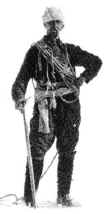|
Crescent Towers
Crescent Towers are towers just east of Crescent Spire and south of Eastpost Spire in the Purcell Mountains of the Columbia Mountains in southeastern British Columbia, Canada Canada is a country in North America. Its ten provinces and three territories extend from the Atlantic Ocean to the Pacific Ocean and northward into the Arctic Ocean, covering over , making it the world's second-largest country by tot .... Crescent towers consist of the North tower, two Central towers, and the two southernmost towers named "Donkey Ears" because they resemble the ears of the animal. Routes North Tower * North Ridge, 5.6 * Northwest Side, 5.4 Central Towers * Northwest Gully, 4th * Lion's Way, 5.6 * Lions and Tigers, 5.8 * Tiger's Trail, 5.9 * Lost in Space, 5.10+ South Towers (Donkey's Ears) * Thatcher Cater, 5.10 * Edwards-Neufeld, 5.10+ * Ears Between, 5.7 * Eeyore, 5.9 References Mountains of British Columbia Columbia Valley Purcell Mountains {{British ... [...More Info...] [...Related Items...] OR: [Wikipedia] [Google] [Baidu] |
The Bugaboos
The Bugaboos are a mountain range in the Purcell Mountains of eastern British Columbia, Canada. The granite spires of the group are a popular mountaineering destination. The Bugaboos are protected within Bugaboo Provincial Park. Geography The Bugaboos are located in the northwestern extreme of the Purcells in the Columbia Mountains, in the south-east of the province. The nearest towns are Radium and Golden. They are commonly subdivided into four divisions: the Bugaboo Glacier Peaks, and the Eastern, Central, and Western Spires. The nearby Vowell and Conrad Groups are usually considered separate from the Bugaboos. Geology Located in the snow- and rain-heavy "Columbia Wet Belt", this section of the Purcells is subject to heavy erosion and large, active glaciers. Originally covered in weaker rock, glaciation eventually revealed the granodiorite batholiths which form the group's distinctive spires. The surrounding rock is approximately 600 million to 1 billion years old, wh ... [...More Info...] [...Related Items...] OR: [Wikipedia] [Google] [Baidu] |
